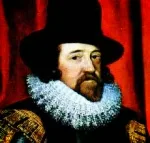Tradition and the Individual Talent
According to the Cambridge Advanced Learner’s Dictionary, Tradition means a belief, principle or way of acting which people in a particular society or group have continued to follow for a long time, or all of these beliefs, etc. in a particular society or group. Merriam-Webster Dictionary describes ‘Tradition’ an ‘inherited, established, or customary pattern of thought, action or behavior (as a religious practice or a social custom)’. Eliot commences the essay with the general attitude towards ‘Tradition’.He points out that every nation and race has its creative and critical turn of mind, and emphasizes the need for critical thinking. ‘We might remind ourselves that criticism is as inevitable as breathing.’In ‘Tradition and Individual Talent’, Eliot introduces the idea of Tradition. Interestingly enough, Eliot’s contemporaries and commentators either derided the idea as irrelevant, conservative and backward-looking stance or appreciated the idea and read it in connection with Matthew Arnold’s historical criticism of texts popularly known as ‘touchstone’ method. In this section we will first make an attempt to summarize Eliot’s concept of tradition and then will seek to critique it for a comprehensive understanding of the texts.
At the very outset, Eliot makes it clear that he is using the term tradition as an adjective to explain the relationship of a poem or a work to the works of dead poets and artists. He regrets that in our appreciation of authors we hardly include their connections with those living and dead. Also our critical apparatus is significantly limited to the language in which the work is produced. A work produced in a different language can be considered for a better appreciation of the work. In this connection, he notices “our tendency to insist…those aspects” of a writer’s work in which “he least resembles anyone else”. Thus, our appreciation of the writer is derived from exhumation of the uniqueness of the work. In the process, the interpretation of the work focuses on identifying the writer’s difference from his predecessors. Eliot critiques this tendency in literary appreciation and favors inclusion of work or parts of work of dead poets and predecessors.
Although Eliot attaches greater importance to the idea of tradition, he rejects the idea of tradition in the name of ‘Blind or Timid Adherence’ to successful compositions of the past. By subscribing to the idea of tradition, Eliot does not mean sacrificing novelty nor does he mean slavish repetitions of stylistic and structural features. By the term ‘Tradition’, he comes up with something ‘of much wider significance”. By ‘Tradition’, he does not refer to a legacy of writers which can be handed down from a generation to another generation. It has nothing to do with the idea of inheritance; rather it regrets a great deal of endearing He further argues, “It involves... The historical sense... and the historical sense involves a perception, not only of the pastiness of the past but its presence; … This historical sense, which is a sense of the timeless as well as of the temporal and of the timeless and of the temporal together, is what makes a writer traditional.” By this statement, Eliot wants to emphasize that the writer or the poet must develop a sense of the pastiness of the past and always seeks to examine the poem or the work in its relation to the works of the dead writers or the poets. To substantiate his point of view, Eliot says, “No poet, no artist of any art, has his complete meaning alone. His significance, his appreciation is the appreciation of his relation to the dead poets and the artists.” As he says this, he is perfectly aware of Matthew Arnold’s notion of historical criticism and therefore distances himself from such the Arnold critical stance. He identifies his approach to literary appreciation “as a principle of aesthetics and thereby distinguishes it from Arnold’s “Historical Criticism”. Thus, Eliot offers an organic theory and practice of literary criticism. In this, he treats tradition not as a legacy but as an invention of anyone who is ready to create his or her literary pantheon, depending on his literary tastes and positions. This means that the development of the writer will depend on his or her ability to build such private spaces for continual negotiation and even struggle with illustrious antecedents, and strong influences. Harold Bloom terms the state of struggle as “The anxiety of influence”, and he derides Eliot for suggesting a complex, an elusive relationship between the tradition and the individual, and goes on to develop his own theory of influence.
































